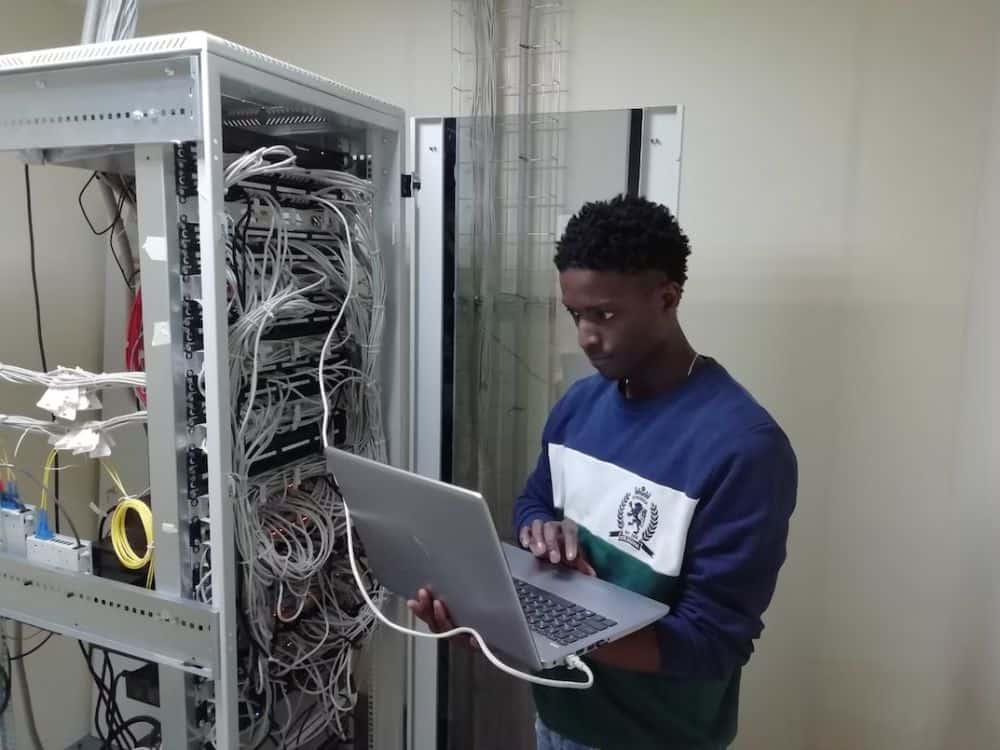Cyber threats have become commonplace, in today’s online world.
Hackers target businesses as a matter of course, and any IT expert will tell you it’s extremely important to ensure your IT systems are implemented securely and methodically. Servers, especially, need to operate as intended so that they can support your business goals, operations and data needs.
While there are several automated server management tools that can greatly reduce the onboarding time required for implementing new systems, the true measure of a system rests in its continuing ability to provide stable services without disruption.
Because organizations vary in their needs and budgets, server automation tools may not necessarily be in the cards. But all is not lost.
IT departments can still effectively leverage their knowledge and skill base to ensure their server systems continue to run properly.
In this blog, we’ll describe a set of simple server management best practices that any organization can implement regardless of their budget or available resources, in order to help your servers deliver optimal performance and data access reliability.
Managing Servers: 10 Best Practices
1. Controlled Log-In Policy
Essentially, all of your servers should be completely off-limits to both local and interactive logins. The goal here is that no one would be logging onto a server as if it were a desktop, regardless of their access level.
The reason for this is that such activity will almost certainly open up vulnerabilities in your system that could be exploited by bad actors down the line.
Your IT department should ideally have a policy in effect that not only monitors interactive logins, but also audits and controls other types of access to their server environments like:
- Object access
- Security permissions
- And any other changes made either with or without authorization
2. Centralized Event Logs
One of the many benefits of a server is that they have incredible logging capabilities. Through the process of configuration, your IT departments can either alter the database servers’ logging capabilities, based on your server requirements in order to:
- Increase size of log files
- Control overwriting permissions
- Change their virtual location
However, by centralizing all of these logs and storing them in one place it becomes easier to sort through them and assign categories to specific entries.
3. Benchmarks and Baselines for Performance
Benchmarking your servers is an important way to optimize their performance and ensure that you’re getting the most out of them.
By taking readings at different intervals over time, you can see when something might be wrong with your system so it doesn’t affect other services or applications on a continuous basis. This helps you identify possible attack vectors as well in addition to:
- Knowing when to optimize software and hardware components
- How services are affected during daily operations
- What resources can be added, removed or moved around
- And more
4. Remote Access Restriction
In order to limit the risk of a compromised server (any by extension data storage), it is important that you understand how remote desktop protocol (RDP) works and what security measures can be taken.
First off, there’s always encryption, which helps protect your data from being accessed by someone else on another system, but even this isn’t perfect because RDS provides an inroad for hackers into other parts or company networks if left unchecked. So make sure firewalls are configured properly with appropriate rulesets against connecting remotely without permission.
Certificate-based authentication adds yet another layer of protection adding to credentials already required during installation time; these include things such as the computer name/fingerprint combo used for signing up.
5. Configuration of Services
In the earlier days of servers, most roles and services were enabled by default despite whether or not they would ever be used in an organization.
This presented a major security issue which is still present today but more controlled with modern server versions; nonetheless it’s always good practice to limit any potential attack surface on your network so you can remove things like unnecessary software dependencies for greater safety.
6. Continuous Monitoring
The servers that host your website and application workloads are essential to maintaining an online experience for users.
You should be monitoring their health so you can identify potential issues before they become serious threats, which helps IT by also allowing them to proactively determine if any of these computers need upgrades or additional resources. This way the department knows how much capacity each server has available on-hand at all times—and whether purchasing more will benefit everyone using services from this particular group (such as a cluster).
7. Patch Management
Patch management is a crucial component of keeping your IT infrastructure up-to-date.
From software security and backups to bug fixing patches, it’s important for maintaining stability in the ever-changing world we live in today where new threats are released every day and old ones make returns as well.
Make sure you have processes set out not only when installing software but also if there will be any testing or investigation before release so that nothing falls through the cracks.
If you don’t, this could cause major problems down line – especially since some versions won’t work unless their underlying server operating systems have been updated first, at minimum levels.
8. Technical Controls
Installing a web access firewall (WAF) to identify known attacks, such as cross-site scripting or SQL injections against the database backend which powers it can help you protect your server from outside threats.
The key is identifying where vulnerabilities lie so they may be mitigated before hackers take advantage!
9. Physical Access Lock Down
The need for isolation is universal and should be applied across all sizes of organizations.
This includes the placement of physical servers (even multiple servers) in secure areas with adequate ventilation, as well as protection from threats outside these rooms through lockdown access controls or encryption technologies, such that they can’t compromise your business’s sensitive information.
The more you limit who has direct access to them (including only those employees necessary based on their job duties) the better.
10. Business Continuity Protection
It’s amazing how many organizations fail to create disaster recovery plans.
It only takes one mistake before all servers and applications go down, and there’s no way for them to fix or recover from their error because they didn’t prepare accordingly with proper back-ups.
The 3-2-1 approach is a very simple way of keeping your precious data safe: You need three separate backup solutions (two types), at least one offsite storage facility in case something does happen.
By implementing an effective disaster recovery plan, you can bolster your hardware and software security with all info in your data centers fully backed up.
Want even more insight into industry-leading IT best practices? Check out these info-packed articles: |
Choosing a Reputable Managed Service Provider for your Server Management Needs
Now that you’re better acquainted with the various ins and outs of server management best practices, perhaps you’re thinking about hiring professionals with years of experience for their server management services or server support services.
Here at Fusion Computing, our managed services are highly reliable, well-priced, and provide clear ROI to all of our clients.
We can effectively manage your ongoing server needs so that you see a noticeable increase in employee productivity and operational efficiency across the board.
Learn more about how we can help you by contacting us for a free quote and consultation today.




